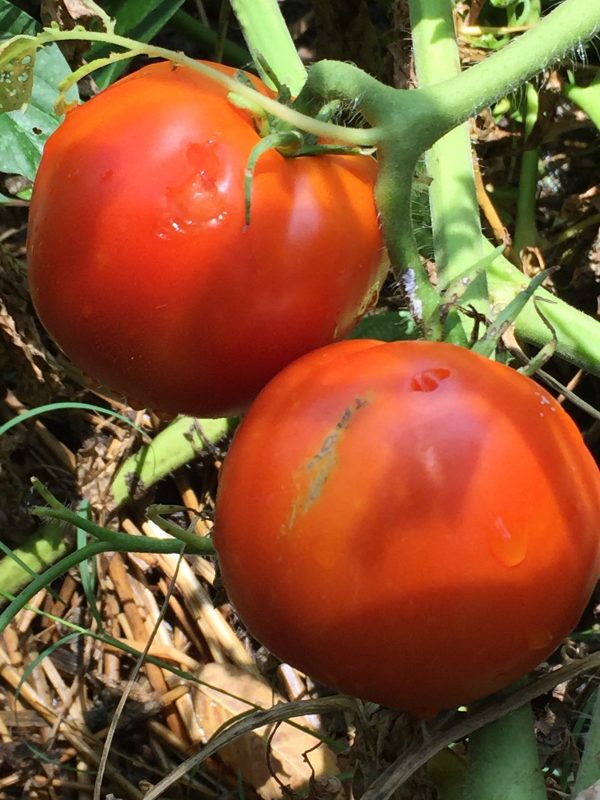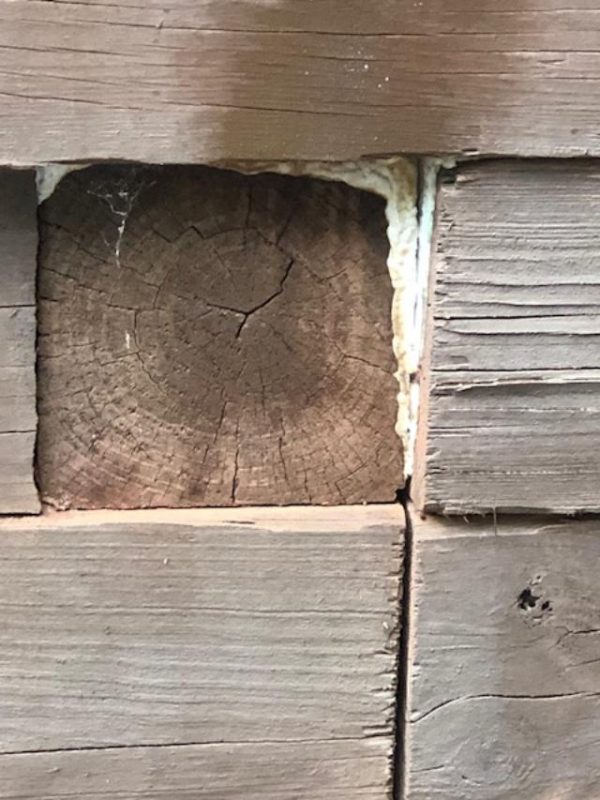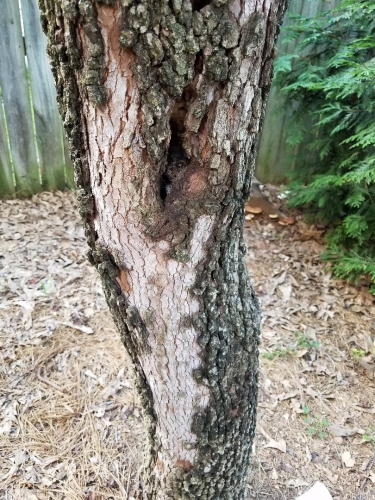Tomato

Lycopersicon lycopersicum
Tomatoes are unquestionably the most popular garden vegetables in the United States. The flavor of a newly picked red tomato from your garden easily surpasses that of premium, greenhouse-grown fruit and no other vegetable comes close to producing as much in a limited space.
• More detailed information can be found in The Georgia Fruit & Vegetable Book by Walter Reeves and Felder Rushing
• See also:
Native to the Americas, tomatoes were introduced into the gardens of Europe in the 1500s, but people considered them poisonous and grew them only as ornamentals. Tomatoes were reintroduced into American gardens in the late 1700s but did not become popular as edible vegetables until about 1850. Gardeners immigrating from overseas often bring a few seeds of precious varieties grown by their families in the Old Country. Even gardeners visiting Italy or Greece are tempted to remove a few seeds from a salad tomato and secret them away to be planted when they arrive home. (This isn’t a good idea, however, because they may introduce a disease or insect that could destroy tomatoes here.)
Tomatoes are tender, warm-weather plants. You set them out after danger of frost has passed, and they will grow until frost arrives in the fall. Hundreds of tomato varieties are available to home gardeners. Newer varieties have eliminated many of the problems associated with these plants. More predictable habit, better fruit set in inclement weather, and disease resistance have been bred into modern tomatoes to make growing them as easy as possible. People with an interest in heirloom plants have preserved inbred lines for gardeners who remember and appreciate the characteristics of traditional varieties. Researchers have improved many of these older, standby varieties so that they are more disease resistant.
Selecting varieties to grow in your garden can be quite a challenge. The over 4,000 varieties of tomatoes come in an incredible range of sizes, shapes, colors, growth habits, and maturity dates. Seed catalogs present tantalizing selections of many of these varieties, each with a glowing description and luscious photo. But not all of them may be suited to your growing conditions. Local garden centers, especially those affiliated with greenhouses that grow their own plants, usually limit choices to plants that do well in their locality. Garden departments of some larger chains import plants grown elsewhere, but offer good varieties if you know what to look for.
Two distinct growth habits of tomato plants determine how you handle them in the garden. Determinate plants form low bushes. A cluster of flowers is set at the ends of stems, stopping the growth on the plant so that all of the fruit forms about the same time. These varieties are good for processing. You can pick and can all of the fruit in a few days. After 1 or 2 pickings, all the fruit is harvested, and you can pull out the plants. Some determinate varieties produce fruit very early in the season, especially when you start them indoors. You will want to make successive plantings and choose varieties of different maturity dates if you want to use determinate varieties to produce fruit for picking throughout the entire season.
Indeterminate varieties set fruit clusters along a vining stem, which continues to grow all season. They never set a terminal flower cluster, so they grow indefinitely. They produce fruit throughout the season until killed off by frost. These varieties are excellent for growing on trellises or stakes. Tomato greenhouses, once common throughout the Midwest, produced indeterminate varieties that grew up to 10 feet tall on strings attached to the rafters of the structures.
Recently, some intermediate varieties have been developed and classified as semideterminate. These varieties are suitable for growing in cages because they stay short and produce all season.
Dwarf varieties have been developed for growing in containers, hanging baskets, planters, or areas with limited space. Some produce small salad tomatoes, but other varieties have large, slicing-sized fruit.
WHEN TO PLANT
Tomatoes are tender plants. A light frost may not kill them but will set them back. Sow seed at the frost-free date (average date of last frost), or set out plants in the garden at the frost-free date if some protection is available. Row covers could be used, but old bed sheets, comforters, and blankets will do. Since the plants do not grow much until soils warm up, plants set at the latest date of last frost will usually develop as fast as those set earlier. For continuous production, make successive plantings of early-, mid-season-, and late-maturing varieties. (The seed packs usually indicate when varieties mature, but the listings in the Varieties chart are better guides.)
WHERE TO PLANT
These plants prefer well-prepared, well-drained soil in full sun (8 to 10 hours will suffice). Plant indeterminate varieties or those in cages or on stakes to the north side of the garden to avoid shading lower-growing plants.
HOW TO PLANT
Prepare the soil by spading or tilling. Incorporate organic matter and fertilizer such as 1 pound of 5-20-20 or 1/2 pound of 10-10-10 per 100 square feet. To plant tomato seeds directly in the garden, sow seeds in hills spaced 2 feet apart for smaller determinate varieties and staked plants; sow seeds 36 to 42 inches apart for caged or larger indeterminate plants on the ground. After seedlings have sprouted, thin to 1 plant per hill. Start tomato transplants indoors, or buy plants from greenhouses or garden centers. Transplants should have 3 to 4 sets of leaves with a healthy green color. Purple or yellow plants will have difficulty getting started. Check plants carefully for signs of insects because aphids and whiteflies often gain entrance to the garden on infested transplants. Remove the plants from the containers, and set the plants at the same depth they were growing in the containers. Firm the soil gently around each plant, and water in with a cup of transplant starter fertilizer mixed according to directions on the package. Homegrown transplants may become weak and leggy, but do not plant them deeper to compensate, or the roots will suffocate. Plant them on their sides, and lightly cover the long stems with soil. The tips of the stems will quickly turn upward, and the buried stems will sprout new roots.
CARE AND MAINTENANCE
Tomatoes are easy to grow, but various problems may affect them. Plant disease-resistant varieties to eliminate verticillium and fusarium wilts, and yellows. Control foliar diseases with maneb fungicide. Use insecticidal soap on aphids and mites; apply carbaryl insecticide to take care of caterpillars and beetles. Other troubles include blossom-end rot and lack of fruit set. Blossom-end rot appears as a leathery-brown spot on the bottom of a tomato. It is more common on certain varieties and on staked plants. It is not a disease, but a result of poor growing conditions or a lack of calcium in the soil; usually, only the problem can be corrected by adding a heaping tablespoon of lime (or two finely-crushed eggshells) to each planting hole, and watering deeply during dry weather without keeping plants too wet. Poor pollination may cause catfacing (malformed fruit). Unusually high or low temperatures or extremely wet weather can interfere with pollination. To help things along, tap flower clusters in early morning to shake pollen from the flowers onto the pistil. Use a pencil to tap the flowers.
Some means of support will keep the plants off the ground, reducing fruit spoilage and making harvesting easier. Tie indeterminate types to stakes, then prune these plants to a single stem by pinching off shoots that develop at each leaf axil. Grow determinate and semideterminate plants in cages. The tiny wire cages sold in garden centers are far too weak and the holes are too small to be worth the cost. Make cages from concrete reinforcing wire, which comes in 5-foot-wide rolls. A 10-foot piece, cut down the middle, will make two 21/2-foot-tall cages about 3 feet in diameter. This wire has holes 6 inches square, so the tomatoes have plenty of room to come through the sides. As they grow, keep the shoots tucked in the cages. When the plants have grown above the tops, pinch them off to control them.
Tomatoes need sufficient water, about 1 inch per week. Fruit on plants that are under intermittent water stress are more likely to suffer from blossom-end rot and from fruit cracking.
Drought-affected plants produce smaller and fewer tomatoes.
Mulch plants to maintain even soil moisture, but delay mulching early plantings until the soil warms up. Cold soils interfere with development of the plants. When the tomatoes bloom, or when they set the first fruit, is a good rule of thumb to indicate that the soils are warm. Mulching plants that are sprawling on the ground will keep the fruit out of the mud.
After the plants have set tomatoes about the size of golf balls, side-dress with a complete fertilizer. Use 10-10-10 at the rate of 1 pound per 100 square feet of bed. Repeat every 3 to 4 weeks until harvest is completed.
Harvest the fruit as it ripens, or if frost is imminent or squirrels and birds are getting the tomatoes quicker than you are, pick them when the green fruit start showing red color – they won’t get any riper, but they will “red up” more after being picked. Do not refrigerate or quality will rapidly diminish.
VARIETIES
Dwarf types have been developed for container planting, and they are suitable for large pots, boxes, hanging planters, or patios where space is limited. Porches and galleries of high-rises often support crops of juicy, red tomatoes all summer. Because of the limited soil in a container, special attention to watering and fertilizing is essential. Containers may need watering as often as once or twice a day in warm weather. Use a dilute liquid fertilizer such as Miracle Gro, Peters, or something similar every 2 weeks. Early variety plants are usually more compact. Because the foliage is often sparse, sunburn can be a problem. Fruit is smaller than main-season varieties. Extra-large tomatoes are novelties, and they are often misshapen with catfacing and blossom-end rot. By the time you cut out the bad parts, you lose the advantage of the large size. Main-crop varieties should be preferred for most gardens. The plants are more vigorous, have better foliage, and are more easily trained to cages or stakes. The fruit is produced over a longer period of time, and it is of the best quality, essentially free from catfacing and cracking. All top varieties (including the AAS winners) are in this category. Medium-early varieties have normal-sized fruit and better-developed plants. They can serve as main-crop types if several plantings are made to spread out production. Best for processing, the Roma types are fleshy and drier than fresh-eating types. Lately however, Romas have become more popular for fresh eating. These plants set a lot of fruit that ripens at one time, so you need to do processing only once. Cracking is usually the biggest problem with salad tomatoes. One plant will usually be enough for a family; they come back from seed each year.
Below are just a few of the many tomato varieties available. see Heirloom Tomatoes – Sources
Varieties
Days to Maturity
Comments
Earliest Harvest:
Bush Early Girl
52 days
VFNT; space saver, large fruit.
Early Girl
54 days
VF; indeterminate, earliest of the full-sized tomatoes.
Jetsetter
55 days
VFFNTA; this one is really something to try!
Quick Pick
60 days
VFFNTA; indeterminate, good quality smooth fruit, popular among farm and community market producers, often grown staked and picked only once.
Medium Early:
Mountain Spring
65 days
VF; determinate, smooth and well rounded.
Red Sun
65 days
Very large, beautiful fruit, fantastic production.
Main Crop:
Better Boy
72 days
VFN; indeterminate, most common variety in garden centers.
Burpee’s Big Girl
78 days
VF; Indeterminate.
Celebrity
70 days
VFFNT; semideterminate, large fruit, very dependable; we rely on this variety for a crop, no matter what the weather; good for fresh use and processing.
Fantastic
70 days
Indeterminate, has no proven disease resistance; it has been around a long time and is still worth growing if verticillium and fusarium aren’t problems.
Floramerica
75 days
VF; determinate, good red color, a reliable performer. AAS.
Mountain Delight
70 days
VF; determinate, good where green shoulders are a problem.
Supersonic
days
F; indeterminate, never cracks, one of the best for staking.
Dwarf:
Husky Gold Hybrid
70 days
Same as Husky Red and Husky Pink but with yellow fruit. AAS.
Husky Pink Hybrid
72 days
VF; indeterminate, same growth habit as Husky Red, pink fruit.
Husky Red Hybrid
68 days
VF; indeterminate, large fruit, producing over a longer period.
Patio Hybrid
65 days
Determinate, nearly normal-sized fruit on a dwarf plant.
Tiny Tim
45 days
Determinate, cherry type.
Extra-Large:
Beefmaster
81 days
VFN; indeterminate, old favorite, 1 big slice goes well on a hamburger.
Delicious
77 days
OP; indeterminate, very large fruit, including the world record at nearly 8 pounds.
Supersteak
80 days
VFN; indeterminate.
Roma:
Roma
75 days
VF; OP; determinate, the standard red plum tomato.
San Marzano
80 days
OP; determinate, lots of meat, very little juice, cooks down easily.
Salad:
Christmas Grapes
65 days
Indeterminate, productive through winter indoors with adequate light and warmth.
Jolly
70 days
Clusters of pink crack-free fruits. AAS.
Juliet
70 days
Indeterminate, elongated 1-ounce fruits in clusters like grapes. AAS.
Mountain Belle
65 days
VF; determinate, crack resistant, ripens evenly.
Sun Gold
70 days
Golden fruit, outstanding flavor.
Super Sweet
70 days
VF; indeterminate; large clusters, cherry-sized, red.
Sweet 100
65 days
VFN; heavy-producing, very sweet, indeterminate vine
Sweet Million
65 days
FNT; indeterminate, crack resistant.
Colored:
Yellow types may be less acidic than reds, and people who have trouble eating the red types may be able to enjoy yellows without difficulty. Yellow tomatoes for canning will need added acid; check the recipe or contact your county cooperative extension service for recommendations.
Pink:
Brandywine
80 days
OP; indeterminate, heirloom, large but rough with ridges and furrows.
Pink Girl
76 days
VF; indeterminate, smooth pink.
Yellow:
Jubilee
70 days
OP; indeterminate, orange.
Lemon Boy
72 days
VFN; indeterminate, lemon yellow.
Mountain Gold
70 days
VF; OP; determinate, deep orange.
Vita-Gold
70 days
Determinate, golden orange, unusually high in beta-carotene.
Other:
Evergreen
82 days
OP; indeterminate, green at maturity, the original for fried green tomatoes.
Green Zebra
80 days
OP; heirloom, green and white at maturity.
Long Keeper
80 days
OP; keeps for months.
ABBREVIATIONS FOR DISEASE RESISTANCE:
V=VERTICILLIUM WILT; F=FUSARIUM WILT; FF=FUSARIUM WILT RACES 1 AND 2; N=NEMATODES; T=TOBACCO MOSAIC VIRUSES; A=ALTERNARIA. OTHER ABBREVIATIONS: AAS=ALL-AMERICA SELECTIONS;
OP=OPEN POLLINATED (VERSUS HYBRID).














